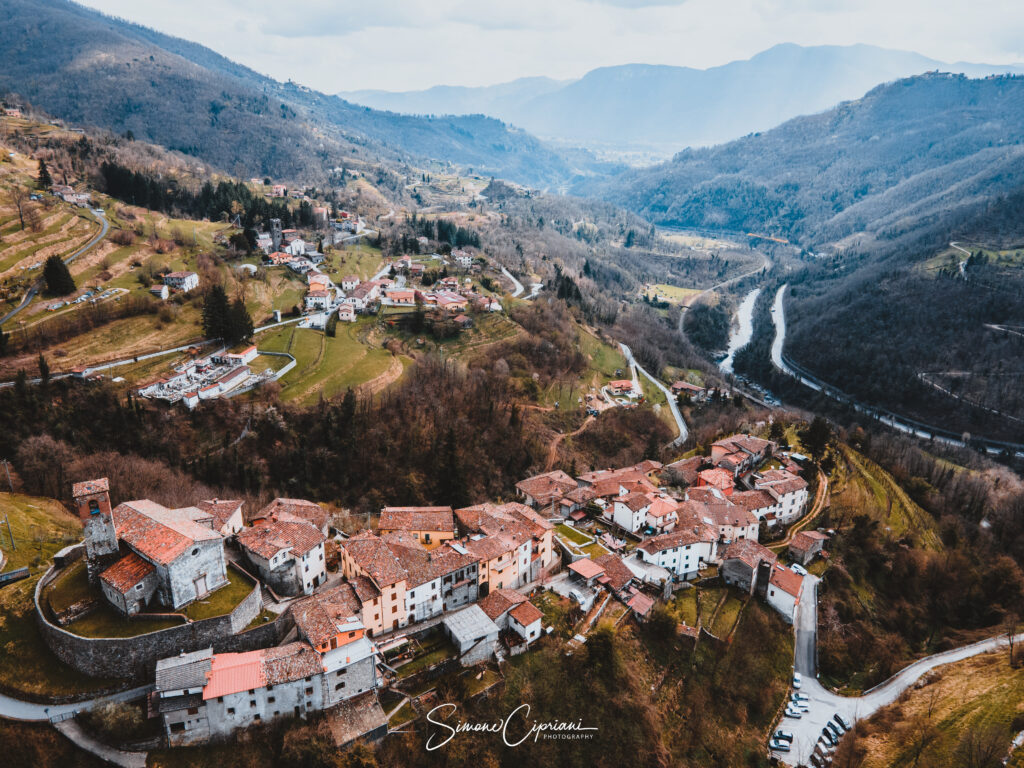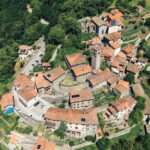The fortress of Ceserana consists of a single boundary wall; on the southern side there are two big semicircular towers and a smaller one. Inside the walls is located the Romanesque church of Sant'Andrea, a structure dating back to the 12th-13th centuries but founded on an older building, presumably prior to 1000. The white stone church, is embellished by a semicircular apse with pilasters and capitals decorated with floral and anthropomorphic motifs. Inside the building there are two wooden statues dating back to the late 14th century, representing Saint James (attributed to master Pietro d'Angelo della Quercia) and Saint Andrew (ascribed to master Antonio Pardini).
Next to the house of worship is the bell tower, which also served as a watchtower.
The fortress belonged to the Rolandinghi since 996, but the community of Ceserana had its own castle most probably before 1048. The fortress took on greater importance during the 12th century, when the city of Lucca extender its expansionist aims to Garfagnana. Because of its great location, this was a site of strategic importance. This fact convinced Paolo Guinigi, lord of Lucca, to include the castle among those to be strengthened and restored.
On May 10, 1430, the Parliament of Ceserana decided to submit to the Florentine Republic.
In 1451 Ceserana voluntarily surrendered to the Estensi; In the agreements Ceserana became the capital of a new Vicariate, the Terre Nuove (New Lands). A large part of the tax revenues of this new territory were to be used to strengthen the fortress. The fortification was important as a last outpost towards the critical border against the city of Lucca.
The most important restructuring measures were completed in 1474 and 1616. One example is the construction of a new staircase to access the Rocca, which doubled the previous one. This restoration work made it possible to keep access to the fortification separate from that of the church, where the Mass was no longer celebrated for security reasons. Valuable Este architects such as Antonio Vacchi and Pasio Pasi worked on the reinforcement of the Fortress of Ceserana. Pasio Pasi realised a very ambitious project in 1615, which included, among other things, the demolition of the Church of St. Andrew and its reconstruction elsewhere. Fortunately, this part of the project was not realised.
In recent decades, other important restoration works has safeguarded and enhanced this architectural complex from its certain degradation.







